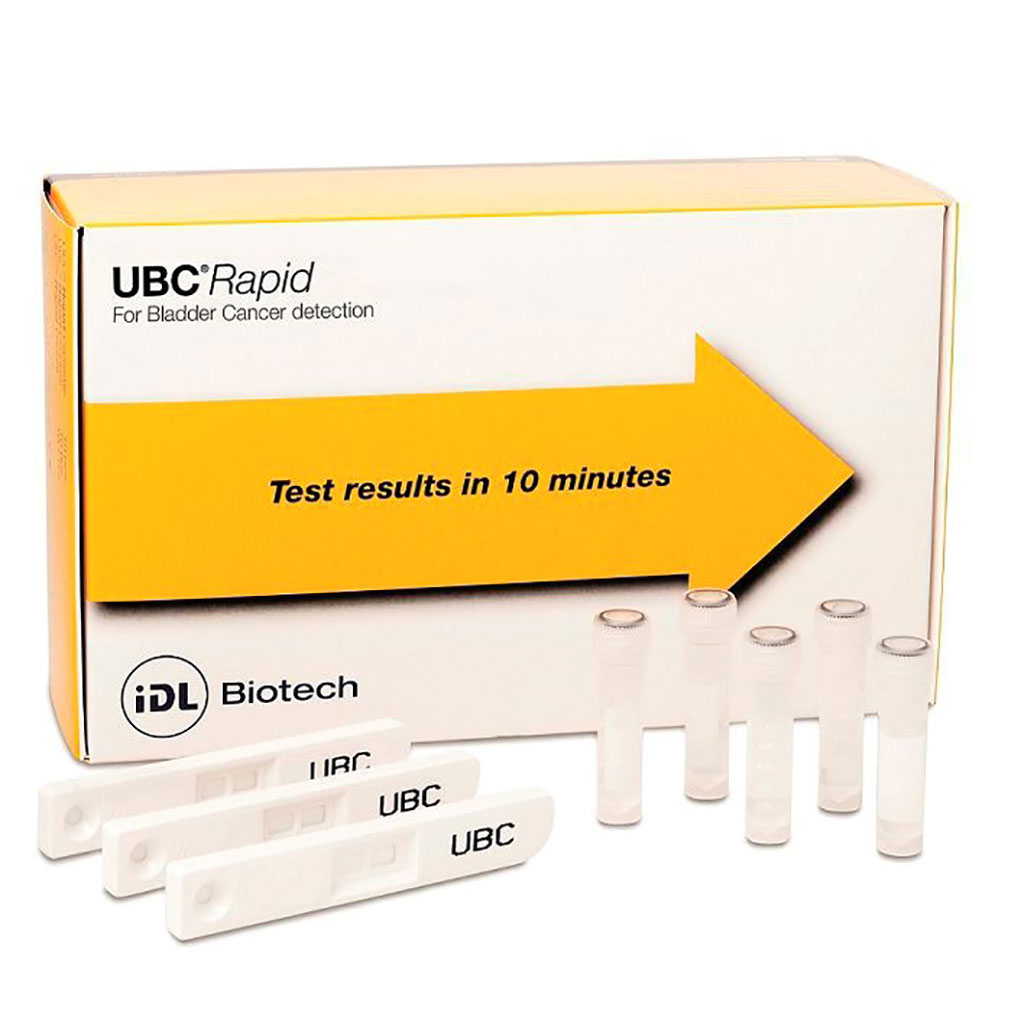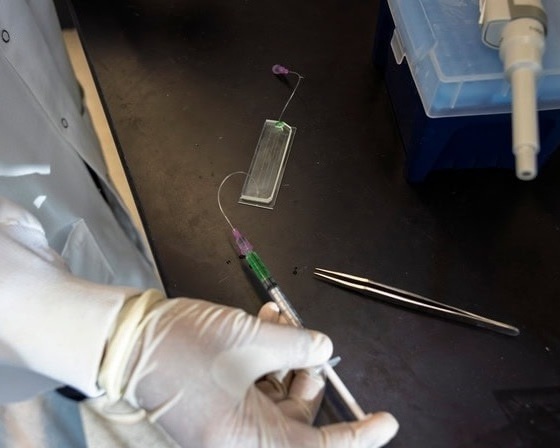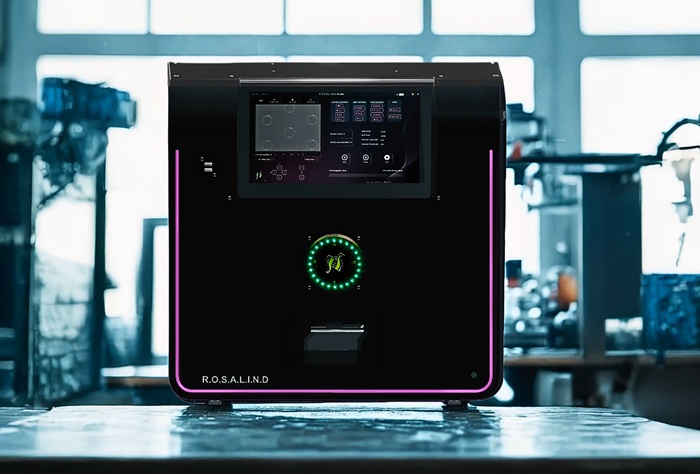Nomograms Including Rapid Antigen Test Detects Primary Bladder Cancer
|
By LabMedica International staff writers Posted on 04 Jan 2022 |

Image: The UBC Rapid is a qualitative test to detect cytokeratin fragments 8 and 18 in urine for bladder cancer detection (Photo courtesy of IDL Biotech)
Urinary bladder cancer (BC) is the tenth most prevalent cancer affecting mainly the elderly and men. The suspicion of BC often arises after the detection of microscopic or macroscopic (gross) hematuria during a patient’s examination.
An accurate urinary marker for BC could be valuable in identifying high-risk patients and reducing the number of control cystoscopies. The broad spectrum of point-of-care (POC) urinary analysis tests currently available facilitates the rapid, non-invasive, and cost-efficient determination of urinary markers, but have a high rate of false positives.
A large international team of Urologists and their colleagues led by those at the Charité - Universitätsmedizin Berlin (Berlin, Germany) analyzed data from 1,787 patients from 13 participating centers tested between 2012 and 2020, including 763 patients with BC. Urine samples were analyzed with the UBC Rapid Test ((IDL Biotech, Bromma, Sweden). The results were quantified by the Concile Ω 100 POC reader (Concile, Freiburg, Germany).
The nomograms were developed using data from 320 patients and externally validated using data from 274 patients. The diagnostic accuracy of the UBC Rapid Test was evaluated using receiver operating characteristics analysis. Brier scores and calibration curves were chosen for validation. Biopsy-proven BC was predicted using multivariate logistic regression.
The investigators reported that the sensitivity, specificity, and area under the curve for the UBC Rapid Test were 46.4%, 75.5%, and 0.61 for low-grade (LG-) BC, and 70.5%, 75.5%, and 0.73 for high-grade (HG-) BC, respectively. Age, UBC Rapid Test results, smoking status, and hematuria were identified as independent predictors of primary BC. After external validation, nomograms based on these predictors resulted in an area under the curve of 0.79 and 0.95 in predicting LG-BC and HG-BC, respectively, showing excellent calibration associated with a higher net benefit than the UBC Rapid Test alone for low and medium risk levels in decision curve analysis.
The authors concluded that the UBC Rapid Test alone has limited clinical utility for predicting the presence of BC. However, its combined use with BC risk factors including age, smoking status, and hematuria provides a fast, highly accurate, and non-invasive tool for screening patients for primary LG-BC and especially primary HG-BC. The study was published on December 20, 2021 in the British Journal of Urology.
Related Links:
Charité - Universitätsmedizin Berlin
IDL Biotech
Concile
An accurate urinary marker for BC could be valuable in identifying high-risk patients and reducing the number of control cystoscopies. The broad spectrum of point-of-care (POC) urinary analysis tests currently available facilitates the rapid, non-invasive, and cost-efficient determination of urinary markers, but have a high rate of false positives.
A large international team of Urologists and their colleagues led by those at the Charité - Universitätsmedizin Berlin (Berlin, Germany) analyzed data from 1,787 patients from 13 participating centers tested between 2012 and 2020, including 763 patients with BC. Urine samples were analyzed with the UBC Rapid Test ((IDL Biotech, Bromma, Sweden). The results were quantified by the Concile Ω 100 POC reader (Concile, Freiburg, Germany).
The nomograms were developed using data from 320 patients and externally validated using data from 274 patients. The diagnostic accuracy of the UBC Rapid Test was evaluated using receiver operating characteristics analysis. Brier scores and calibration curves were chosen for validation. Biopsy-proven BC was predicted using multivariate logistic regression.
The investigators reported that the sensitivity, specificity, and area under the curve for the UBC Rapid Test were 46.4%, 75.5%, and 0.61 for low-grade (LG-) BC, and 70.5%, 75.5%, and 0.73 for high-grade (HG-) BC, respectively. Age, UBC Rapid Test results, smoking status, and hematuria were identified as independent predictors of primary BC. After external validation, nomograms based on these predictors resulted in an area under the curve of 0.79 and 0.95 in predicting LG-BC and HG-BC, respectively, showing excellent calibration associated with a higher net benefit than the UBC Rapid Test alone for low and medium risk levels in decision curve analysis.
The authors concluded that the UBC Rapid Test alone has limited clinical utility for predicting the presence of BC. However, its combined use with BC risk factors including age, smoking status, and hematuria provides a fast, highly accurate, and non-invasive tool for screening patients for primary LG-BC and especially primary HG-BC. The study was published on December 20, 2021 in the British Journal of Urology.
Related Links:
Charité - Universitätsmedizin Berlin
IDL Biotech
Concile
Latest Technology News
- Diagnostic Chip Monitors Chemotherapy Effectiveness for Brain Cancer
- Machine Learning Models Diagnose ALS Earlier Through Blood Biomarkers
- Artificial Intelligence Model Could Accelerate Rare Disease Diagnosis
- AI Saliva Sensor Enables Early Detection of Head and Neck Cancer
- AI-Powered Biosensor Technology to Enable Breath Test for Lung Cancer Detection
- AI Model Achieves Breakthrough Accuracy in Ovarian Cancer Detection
- Portable Biosensor Diagnoses Psychiatric Disorders Using Saliva Samples
- Cell-Sorting Device Uses Electromagnetic Levitation to Precisely Direct Cell Movement

- Embedded GPU Platform Enables Rapid Blood Profiling for POC Diagnostics
- Viral Biosensor Test Simultaneously Detects Hepatitis and HIV
Channels
Molecular Diagnostics
view channel
World's First NGS-Based Diagnostic Platform Fully Automates Sample-To-Result Process Within Single Device
Rapid point-of-need diagnostics are of critical need, especially in the areas of infectious disease and cancer testing and monitoring. Now, a direct-from-specimen platform that performs genomic analysis... Read more
Rapid Diagnostic Breakthrough Simultaneously Detects Resistance and Virulence in Klebsiella Pneumoniae
Antibiotic resistance is a steadily escalating threat to global healthcare, making common infections harder to treat and increasing the risk of severe complications. One of the most concerning pathogens... Read moreHematology
view channel
MRD Tests Could Predict Survival in Leukemia Patients
Acute myeloid leukemia is an aggressive blood cancer that disrupts normal blood cell production and often relapses even after intensive treatment. Clinicians currently lack early, reliable markers to predict... Read more
Platelet Activity Blood Test in Middle Age Could Identify Early Alzheimer’s Risk
Early detection of Alzheimer’s disease remains one of the biggest unmet needs in neurology, particularly because the biological changes underlying the disorder begin decades before memory symptoms appear.... Read more
Microvesicles Measurement Could Detect Vascular Injury in Sickle Cell Disease Patients
Assessing disease severity in sickle cell disease (SCD) remains challenging, especially when trying to predict hemolysis, vascular injury, and risk of complications such as vaso-occlusive crises.... Read more
ADLM’s New Coagulation Testing Guidance to Improve Care for Patients on Blood Thinners
Direct oral anticoagulants (DOACs) are one of the most common types of blood thinners. Patients take them to prevent a host of complications that could arise from blood clotting, including stroke, deep... Read moreImmunology
view channel
Blood Test Could Identify Colon Cancer Patients to Benefit from NSAIDs
Colon cancer remains a major cause of cancer-related illness, with many patients facing relapse even after surgery and chemotherapy. Up to 40% of people with stage III disease experience recurrence, highlighting... Read moreBlood Test Could Detect Adverse Immunotherapy Effects
Immune checkpoint inhibitors have transformed cancer treatment, but they can also trigger serious immune-related adverse events that damage healthy organs and may become life-threatening if not detected early.... Read moreMicrobiology
view channel
New UTI Diagnosis Method Delivers Antibiotic Resistance Results 24 Hours Earlier
Urinary tract infections affect around 152 million people every year, making them one of the most common bacterial infections worldwide. In routine medical practice, diagnosis often relies on rapid urine... Read more
Breakthroughs in Microbial Analysis to Enhance Disease Prediction
Microorganisms shape human health, ecosystems, and the planet’s climate, yet identifying them and understanding how they are related remains a major scientific challenge. Even with modern DNA sequencing,... Read morePathology
view channel
AI Tool Simultaneously Identifies Genetic Mutations and Disease Type
Interpreting genetic test results remains a major challenge in modern medicine, particularly for rare and complex diseases. While existing tools can indicate whether a genetic mutation is harmful, they... Read more
Rapid Low-Cost Tests Can Prevent Child Deaths from Contaminated Medicinal Syrups
Medicinal syrups contaminated with toxic chemicals have caused the deaths of hundreds of children worldwide, exposing a critical gap in how these products are tested before reaching patients.... Read more
Tumor Signals in Saliva and Blood Enable Non-Invasive Monitoring of Head and Neck Cancer
Head and neck cancers are among the most aggressive malignancies worldwide, with nearly 900,000 new cases diagnosed each year. Monitoring these cancers for recurrence or relapse typically relies on tissue... Read moreTechnology
view channel
Diagnostic Chip Monitors Chemotherapy Effectiveness for Brain Cancer
Glioblastoma is one of the most aggressive and fatal brain cancers, with most patients surviving less than two years after diagnosis. Treatment is particularly challenging because the tumor infiltrates... Read more
Machine Learning Models Diagnose ALS Earlier Through Blood Biomarkers
Amyotrophic lateral sclerosis (ALS) is a rapidly progressive neurodegenerative disease that is notoriously difficult to diagnose in its early stages. Early symptoms often overlap with other neurological... Read moreIndustry
view channel
BD and Penn Institute Collaborate to Advance Immunotherapy through Flow Cytometry
BD (Becton, Dickinson and Company, Franklin Lakes, NJ, USA) has entered into a strategic collaboration with the Institute for Immunology and Immune Health (I3H, Philadelphia, PA, USA) at the University... Read more






















